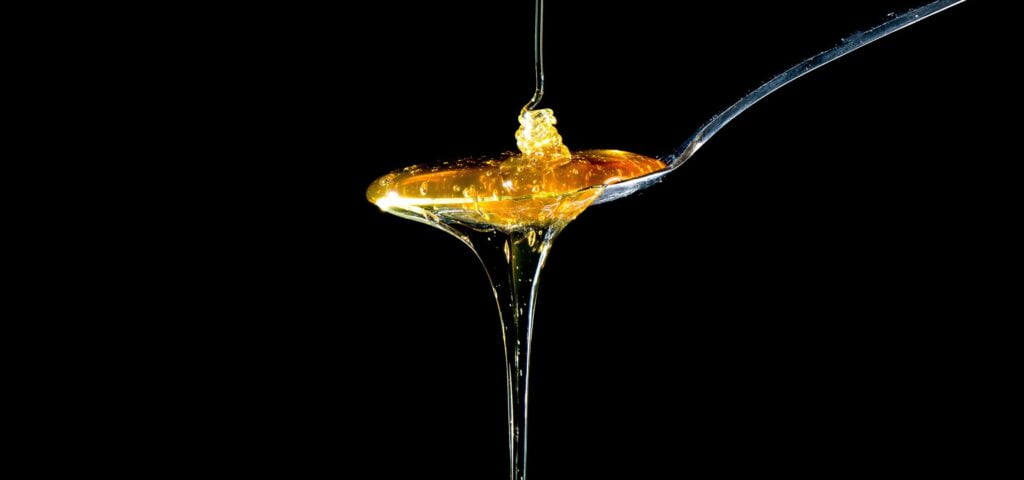Invert Sugar: Is It Good for Me?

In this sugar-controversial world, inverted sugar is a lesser-known but rapidly growing sweetener that sticks out. However, is invert sugar healthy to include in our diets, and what is it anyway? This article explores the science of invert sugar, discussing its possible advantages and disadvantages and helping you decide if it’s a good fit for your health-conscious lifestyle.
What is Invert Sugar?
Sure thing! The hydrolysis, or breakdown, of sucrose, the sugar typically found in sugar cane, sugar beets, and other fruits, produces invert sugar. The more complex sugar sucrose is a combination of the less complex sugars glucose and fructose. The hydrolysis process breaks down sucrose into glucose and fructose.
This process of hydrolysis can occur through two main methods:
- Acidic Hydrolysis: An acid, like lemon juice or cream of tartar, and water were heated together to make inverted sugar in the past. The acid hydrolyzes the sugar molecules glucose and fructose from the sucrose molecule. For ages, this technique has been employed in the kitchen and for preserving food.
- Enzymatic Hydrolysis: To facilitate the hydrolysis of sucrose in a more efficient and exact manner, modern industrial procedures frequently include enzymes. Without the need for acidic conditions, sucrose can be broken down into glucose and fructose by adding enzymes like invertase to sucrose solutions. In the commercial food industry, this technique is widely utilized.
Inverted sugar refers to the syrupy liquid that is produced, which contains a combination of glucose and fructose. There are many culinary uses for inverted sugar due to its favorable qualities and the fact that it is sweeter than sucrose alone. Its improved sweetness, moisture-retaining characteristics, and capacity to prevent crystallization make it a common ingredient in baked goods, candies, and drinks.
How is Invert Sugar Made:

The hydrolysis, or breakdown, of sucrose into glucose and fructose is the first step in producing invert sugar. To do this, acidic hydrolysis and enzymatic hydrolysis are the two most common approaches.
Acidic Hydrolysis:
- Here, an acid catalyst is used to heat a water-sucrose (table sugar) solution in the conventional fashion. Citric acid, cream of tartar, and lemon juice are some of the most common acids utilized.
- As a result of the acid catalyzing the hydrolysis reaction, glucose and fructose are produced from sucrose molecules.
- To guarantee full hydrolysis, the mixture is further heated to a certain temperature for a predetermined time.
- After the hydrolysis process is finished, a basic like potassium carbonate or sodium bicarbonate is used to counteract the acidic conditions.
- Inverted sugar is the syrupy liquid that comes out of the process; it contains glucose and fructose mixed together.
Enzymatic Hydrolysis:
- Enzymes are utilized in contemporary industrial processes to facilitate the hydrolysis of sucrose in a more efficient and precisely controlled manner.
- The invertase enzyme can degrade sucrose into glucose and fructose even in acidic environments.
- To maximize the enzyme’s activity, the reaction is usually conducted in a controlled environment with respect to pH and temperature.
- Enzymes are inactivated or extracted from solutions once hydrolysis is finished.
- There are a number of culinary uses for the syrupy liquid that is produced, which contains inverted sugar.
Because both processes incorporate glucose and fructose, the resulting syrupy liquid is sweeter than sucrose on its own. With its exceptional sweetness, ability to retain moisture, and resistance to crystallization, inverted sugar finds widespread application in the baking, confectionery, and beverage industries.
Table of Contents
The Benefits of Invert Sugar:
- Improved Sweetness: The presence of fructose and glucose in inverted sugar makes it sweeter compared to sucrose alone. The reduced sugar level in recipes or products is a result of using lesser quantities made possible by this enhanced sweetness.
- Enhanced Moisture Retention: Because of its hygroscopic properties, invert sugar makes baked goods softer and keeps them fresher for longer by attracting and retaining moisture.
- Prevents Crystallization: Candies and ice creams benefit from inverted sugar because it prevents crystallization, resulting in a silkier texture.
Potential Drawbacks:
- Caloric Content: People managing health concerns like diabetes or limiting their calorie intake should use inverted sugar in moderation because, like all sugar, it is calorie rich.
- Dental Health: In spite of its potential culinary uses, invert sugar is harmful to oral health in large quantities and can cause cavities and decay if eaten regularly.
- Processing Concerns: For those who are wary of the industrial processing processes used to make inverted sugar, there are natural alternatives such as honey and maple syrup.
Is Invert Sugar Right for You?

The answer to the question of whether invert sugar is “good” for you is conditional on your unique health objectives, dietary tastes, and way of life. Use it with moderation and be cautious of how much you eat it, even though it has great uses in the kitchen. The secret to a healthy diet, like with any meal or substance, is moderation and variety.
Conclusion:
Though it’s not exactly a household word, invert sugar is a valuable addition to any conversation about sweeteners due to its adaptability and advantages. People can make educated decisions about adding invert sugar to their diets if they have a good grasp of its ingredients, manufacturing processes, and possible effects on health. To achieve a healthy and fulfilled lifestyle, it is vital to be knowledgeable and to use moderation when making food decisions.

